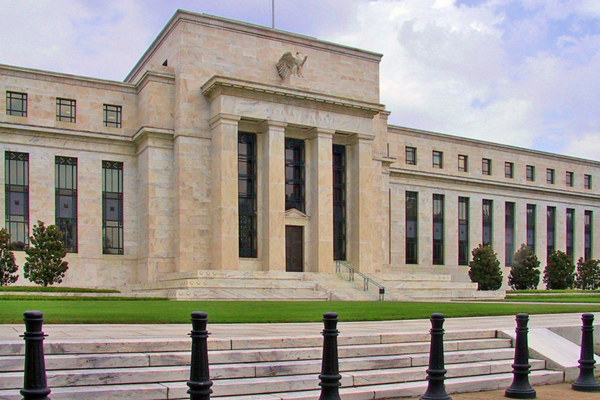Louisiana banks focus on deposits to avoid liquidity crunch
03/02/2023
By: Stephen Maloney, New Orleans City Business Staff Writer & Reporter

As consumers head toward the third month of 2023, inflation remains high, the threat of a recession lingers, and large companies are announcing massive layoffs. While any banker will tell you it’s always a good time to save, the current market conditions are rewarding investors particularly well as banks compete to have the most attractive Certificate of Deposit (CD) interest rates in town.
"This is going on with all banks,” said John Zollinger, executive vice president and chief banking officer of Home Bank. “If you look at it macroeconomically, The [Federal Reserve] is tightening. Therefore, they are restricting money supply.”
The Fed targets the money supply through two main actions: increasing interest rates and selling out the securities on the Fed’s balance sheet, Zollinger said.
“If you would go to the Federal Reserve’s website and look at its balance sheet, you would see that it is shrinking, it’s getting smaller,” he said. “Therefore, that is taking money supply out of the economy.”
During the worst days of the COVID-19 pandemic, the government pumped a tremendous amount of money into the economy through a variety of grants and low interest rates.
As the Fed’s priority turned from propping up the economy to attempting to control inflation by tightening the money supply, that, in effect, decreased the amount of money being held by banks, said Chris Ferris, CEO of Fidelity Bank and NOLA Lending Group.
Ferris said the effort to shrink the Fed’s balance sheet will continue throughout 2023. All told, Ferris said he’s expecting a further selloff worth about $1.5 billion.
“That could, in itself, even when rates stabilize, continue to have banks sort of looking at ways to fund loan growth,” Ferris said. “Just because the FED stabilizes rates, they’re still going to continue to shrink that balance sheet, and that does suck money out of the economy. That money goes away. It’s basically incinerated.”
This sell off can put banks in a precarious position. Ferris said if a bank wasn’t conservative when the money came in over the last few years, that bank could be facing a liquidity crunch right now, or within the next few months.
Gulf Coast Bank & Trust Co. President and CEO Guy Williams said this liquidity crunch has spurred an “arms race” between local banks to compete for new deposits and new customers through higher CD rates.
“Banks across America are realizing that they need to pay higher interest rates in order to retain or grow deposits,” Williams said. “Consumer deposits are beginning to go up. There are still some instances where people are getting essentially nothing, and that’s not necessary anymore.”
Williams said faced with a liquidity drain, banks can either shrink in size or grow deposits. Starting at the beginning of 2023, just about every local bank had to shift their focus to deposits, if for no other reason than to maintain the ability to loan money to individuals and businesses.
“I’m very happy for the senior citizens that are living on a fixed income,” Williams said. “This is a time that they can actually make a good return.”
Ferris said it’s a great time to invest in CDs or IRAs as banks compete for client dollars.
“It’s a great time to be a saver,” Ferris said. “Banks are going to have to manage their balance sheets this year and focus now on cost of funds, which we haven’t really focused too much on, because there were so many deposits, but there’s still, in my opinion, a healthy spread between client deposits and what we pay on CDs versus going to what’s called a brokered market for borrowing from the Federal Home Loan Banks. We still are able to reward savers at what I think is a very good rate, versus going to have to go out and borrow from the Federal government or the brokered market.”
Louisiana Bankers Association CEO Ginger Laurent said Louisiana banks, while increasing deposits out of caution, are still on strong financial ground.
“That would be something the regulators would look at,” Laurent said. “Our conversations with the regulators are that the banks are in a strong position.”
Laurent said a similar liquidity crunch swept through the market in 2008 and 2009 as the housing crisis unfolded. Louisiana banks faced much stronger headwinds back then, she said, but all indications are that the current moves will be enough to right the ship.
Ferris said a key difference between the current situation and previous problems is that banks today aren’t facing the same kind of credit issues that they have in the past.
“The banking industry today was much better pre-prepared, better capitalized than we have really been in my career,” Ferris said. “What we’re seeing now is just a significant slowdown in lending because of the Fed’s desire to cool off the economy, so you see savers now being more rewarded and banks are just trying to best run their balance sheet, not because they have credit issues, but just because they want to remain in a good liquidity position.”
Even with the Fed expected to continue to raise interest rates, Ferris said he foresees the liquidity crisis to end sometime this year.
“We estimate 50 more basis points this year, which would push the Fed’s interest rate to 5.25,” Ferris said. “We probably will see deposit rates continue to climb, and maybe stabilize by the second half of the year. Hopefully, going into ‘24 is a much more stable environment, and rates at that point will start to come down.”
